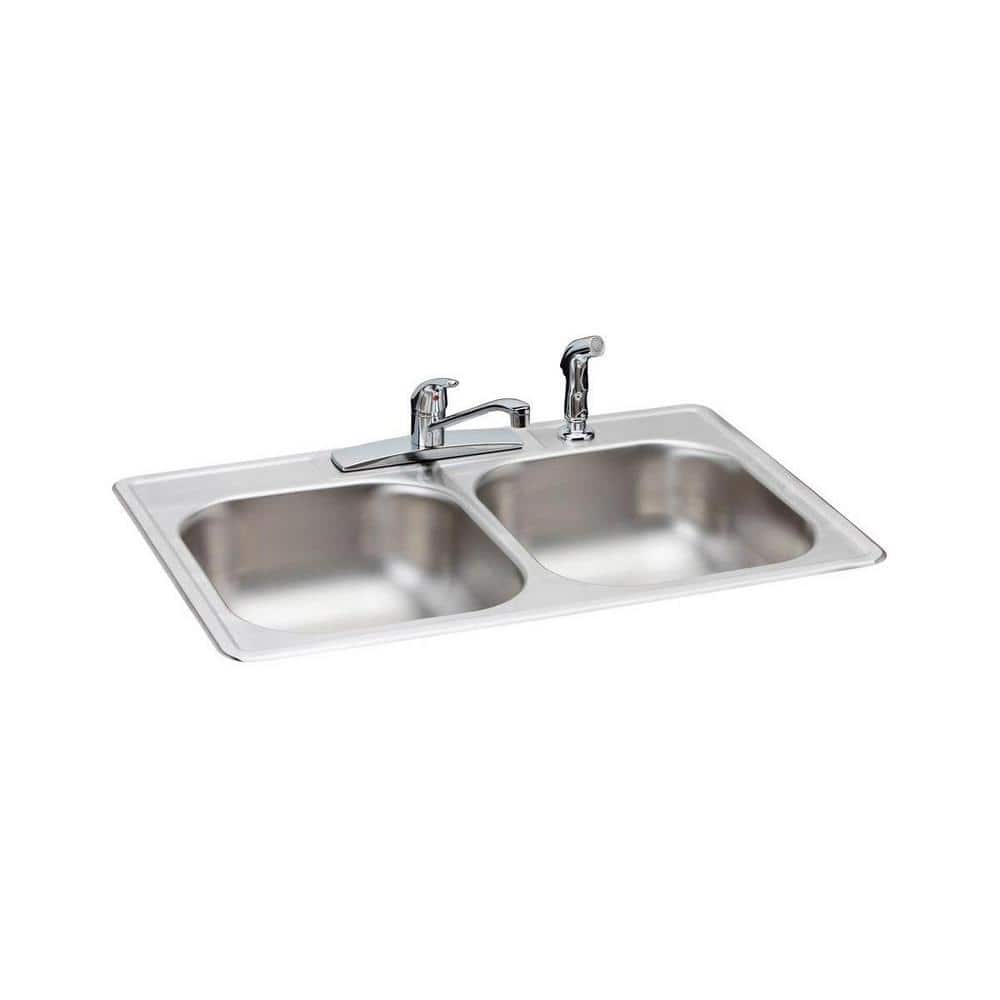Glacier Bay All in-One 33 in. Drop-in Double Bowl 22 Gauge Stainless Steel Kitchen Sink with 4-Holes and Faucet/Side Sprayer
33 in. x 22 in. x 7.0625 in. minimum cabinet size 36 in. Insulation minimizes disposal and running water sounds. Includes sink, faucet, sprayer, drains and strainers.
Make cleanup easy every night with this All-in-One Drop-In Stainless Steel 33 in. 4-Hole Double Bowl Kitchen Sink. It includes the sink, faucet, sprayer, drains, and strainers, so it’s ready to use after an easy installation. Straight sidewalls provide a flat sink bottom, offering more space for washing, soaking and stacking dishes.
- Top Mount Installation: Sink is designed for drop-in installation to make the sink a focal point of your room
- Commercial grade 22-Gauge stainless steel for durability and everyday use
- Sound-deadening pad(s) minimizes sound and vibration for a quieter time at the sink
- Mounting clips placed inside the channel before installation mean less time under the sink for an easier install
- Drain placement provides more usable space on the bottom of the sink and in the cabinet below
- Straight sidewalls give the sink a flat bottom and offer more usable space for stacking, soaking and washing dishes; easy to clean
- Sink drain opening measures 3-1/2 in.
- Minimum cabinet size for this sink is 36 in.
Additional information
| Actual Left to Right Length (In.) | 33 |
|---|---|
| Bowl Top to Bottom Depth (in.) | 6.875 |
| Cut-Out Below Counter Depth (in.) | 7 |
| Cut-Out Depth (in.) | 21.375 |
| Cut-Out Width (in.) | 32.375 |
| Kitchen Sink Front to Back Width (In.) | 22 |
| Left Inner Bowl Below Counter Depth (in.) | 6.875 |
| Left Inner Bowl Front to Back Width (in.) | 15.75 |
| Left Inner Bowl Left to Right Length (in.) | 14 |
| Right Inner Bowl Below Counter Depth (in.) | 6.875 |
| Right Inner Bowl Front to Back Width (in.) | 15.75 |
| Right Inner Bowl Left to Right Length (in.) | 14 |
| Spout Height (in.) | 5.86 |
| Manufacturer Warranty | Limited Lifetime |






by Rebecca
This sink is beautiful and works really well!
by Jimmy
Fit like a glove much to my surprise thing’s don’t usually work like that for used a hole saw bit to accommodate new hole pattern ezy pize.
by Charles
quality product at a good price.